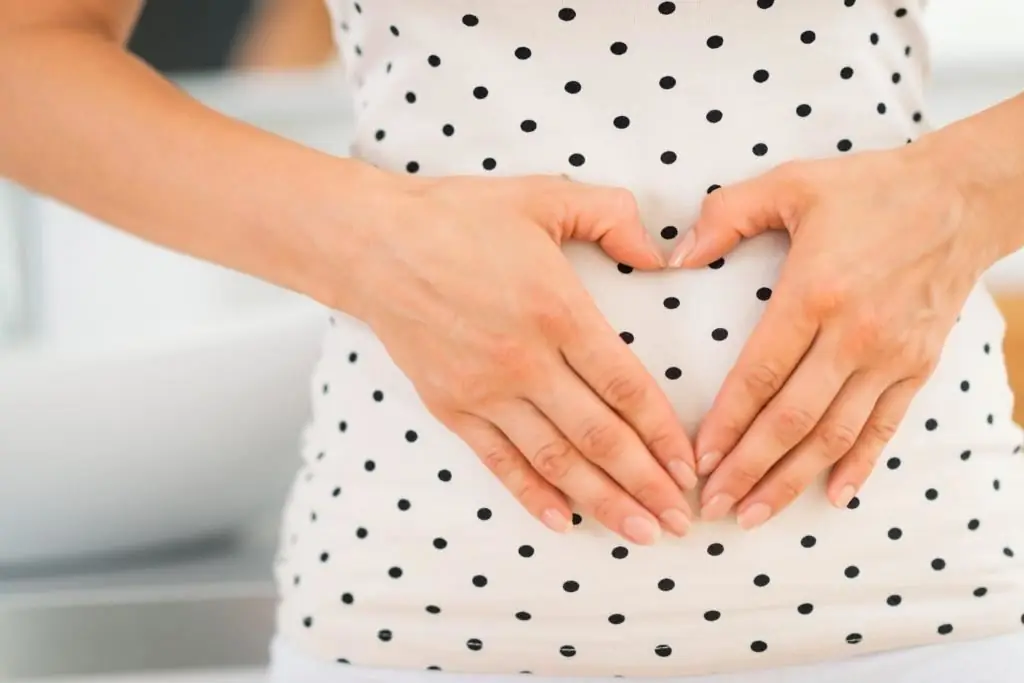2026 Author: Priscilla Miln | [email protected]. Last modified: 2025-01-22 17:55:27
There are a lot of protocols in the in vitro fertilization program. Each of them has its own advantages, so it is impossible to choose the best one. The appointment of a particular protocol takes into account the individual characteristics of the patient's he alth. The task of the doctor is to identify all possible contraindications and achieve a positive result, that is, a successful pregnancy. Currently, two IVF protocols are most common: short and long. Each of them has its own characteristics. But at the same time they consist of exactly the same stages. Below are detailed short IVF protocols by day, as well as a long one.
General Principles
The in vitro fertilization program consists of several stages. Moreover, their number does not depend on the protocol. It often happens that women, inspired byinformation presented on the forums, put pressure on the doctor, imposing a successful, in their opinion, scheme. It is important to understand that what works for one patient may not work for another.
IVF programs are designed to block the synthesis of FSH and LH hormones. It can be either complete or partial. Against the background of the blockade, medications are introduced, the active components of which contribute to the maturation of the required number of follicles.
There are uniform rules for all protocols. All prescribed drugs are administered either intramuscularly or subcutaneously (in this case, in the stomach). Injections should be done daily at exactly the same time. Patients are prohibited from canceling or replacing the drug, adjusting the dosage, and skipping the administration of the drug. Only a doctor has the right to make changes to the scheme on the basis of ultrasound.

Features of the short protocol
Its duration is only 4 weeks. In other words, it fully corresponds to the physiological cycle.
Short IVF protocol by day (detailed):
- On the first day of the cycle, an ultrasound examination is scheduled. Based on its results, the doctor selects medicines.
- On the 2nd or 3rd day is the beginning of the introduction of stimulating and regulating drugs. This stage takes 10 days.
- Triggers are assigned on the 12th or 13th day. These are drugs whose active ingredients modulate the conditions under which the oocyte detaches from the follicle.
- In 35 hourspuncture.
Often a short protocol is appointed after a long one that has been unsuccessfully carried out. It is well tolerated by most patients, due to low dosages of hormonal agents. In addition, he usually does not have ovarian hyperstimulation syndrome.
Indications
Short protocol in most cases assigned to he althy women. The main indications for this scheme:
- Regular menstrual cycle.
- Failed IVF attempts in the past with other protocols.
- Good supply of eggs.
In addition, this scheme can be assigned to women for financial reasons. It is considered the cheapest.
Features of the long protocol
As a rule, it is prescribed for low quality of previously obtained eggs. With this scheme, the development of follicles occurs synchronously, they have the same size. In addition, the number of immature eggs is significantly reduced.
Long IVF protocol by day (detailed):
- In the first 20 days of the cycle, no activities are carried out.
- On the 21st or 22nd day, the introduction of regulatory drugs begins. After that, you must wait for the start of menstruation.
- On the 2nd or 3rd day from the onset of bleeding, the introduction of stimulant drugs begins. Injections are carried out from 10 to 12 days (in isolated cases it takes a longer period of time).
- When the eggs mature, a puncture is performed.
During all this time, the patient needs to go 4 timesultrasound examination.
Long protocol has a high risk of developing ovarian hyperstimulation syndrome.

Indications
This treatment regimen is often prescribed for the first time, and after others have not led to a positive result. Long protocol indications:
- Regular menstrual cycle.
- Little egg supply in middle-aged women.
- Endometriosis.
- Uterine fibroids.
- Hyperplastic phenomena in the endometrium.
- Failed attempts to conceive using other protocols.
The long regimen is very expensive.
The first stage - entering the program
Approximately 10 days before the onset of menstrual bleeding, you need to make an appointment with your doctor and undergo an ultrasound scan. During the study, the reproductologist assesses the condition of the pelvic organs and the thickness of the uterine mucosa. In the absence of ovarian cysts and endometrial pathologies, the doctor and the patient sign all the necessary documents (contract, agreement, etc.).
After that, the specialist draws up a list of appointments for the woman. With him she must come to every appointment. The doctor talks about the principles of in vitro fertilization, and also provides information about the selected IVF protocol in detail by day.
During treatment, both partners must strictly follow the recommendations of the specialist and come to the appointment at the strictly appointed time. The implementation of activities can be stopped at any stage, if the doctor is sure offailure of the result. In this case, the patient is returned the money for the actions not taken.

Second stage - stimulation of ovulation
Reproductologist talks about drugs in detail, the IVF protocol by day is also discussed again. This is due to the fact that there are short and long schemes of stimulation.
The following drugs are prescribed for the patient:
- Gonadoliberin agonists. Examples of funds: "Diferelin", "Decapeptil".
- Antagonists of GnRH. These include: "Cetrotide", "Orgalutran".
- HMG preparations. The most commonly prescribed is Menopur.
- FSH preparations. Examples of funds: "Gonal-F", "Puregon".
- HCG preparations. As a rule, experts recommend Pregnil.
These medicines can be prescribed both jointly and sequentially. The doctor necessarily talks about the dosing regimen by day and in detail. It is strictly forbidden to violate the IVF protocol at the stage of ovulation stimulation.
In all cases, the introduction of "Decapeptyl" or "Diferelin" is carried out first. These are drugs that prepare the ovaries for the process of stimulating them.
Speaking by the day, the long IVF protocol implies their introduction on the 2nd or 3rd day, from the moment the menstrual bleeding begins. Short - in the same period of the cycle.

Third stage - monitoring
The patient needs to undergo ultrasound several times and donate blood for the hormone estradiol. The number of studies depends onindividual he alth characteristics and the selected IVF protocol. In detail and by day, the doctor analyzes the changes during the treatment. As a rule, the first monitoring is carried out on the 5th day after the start of stimulation. During an ultrasound, the doctor evaluates the growth dynamics of the follicles and the thickness of the uterine mucosa. Based on the results of the study, adjustments to the dosing regimen may be made.
As a rule, ultrasound is performed once every 5 days. After the start of active growth of follicles, the study should be carried out every 2-3 days. Blood sampling for analysis is carried out with the same frequency, or a little less often.
At each monitoring, the doctor evaluates the size of the follicles and the thickness of the endometrium. As soon as the reproductologist decides that the patient is ready for the puncture, he prescribes the administration of the hCG preparation. As a rule, the injection is carried out after 35 hours. This time is necessary for the final maturation of the follicles.

Fourth stage - puncture
According to any IVF protocol by day, it is carried out at the onset of ovulation. The main task at this stage is to obtain eggs from the follicles by puncturing the latter with a hollow needle. This intervention is carried out under sterile conditions and under control using an ultrasound machine. Previously, the patient is immersed in a state of anesthesia.
The duration of the procedure is no more than 20 minutes. At the same time, the partner must donate sperm for examination and further processing.
Received follicular fluid containingeggs in sterile disposable containers are sent to the embryology laboratory.
After the intervention, the patient is under medical supervision for about 2 hours. As soon as the anesthesiologist makes sure that there are no complications after anesthesia, he will refer the woman and her husband to the treating reproductologist. According to reviews, the IVF protocol (the scheme is described in detail above by day) at this stage is well tolerated by most patients. After the procedure, minor pain and scanty spotting may disturb.
Medical support for the function of the corpus luteum after puncture is another point of the IVF protocol. The doctor describes the dosing regimen in detail by day. Strict adherence to the recommendations leads to an improvement in the condition of the endometrium, which significantly increases the chances of successful implantation. As a rule, doctors prescribe Utrozhestan vaginal capsules and Dufaston or Proginova tablets.
Fifth stage - egg fertilization
In the laboratory, the embryologist examines the resulting follicular fluid. He selects the most viable eggs and places them in an incubator. Regardless of whether a woman chose a long or short IVF protocol (by day, both schemes are described above), the fertilization process takes place a maximum of 6 hours after receiving the biomaterial.
Initial evaluation is due in 18 hours. At this time, the eggs already show the first signs of successful fertilization. Reassessment is carried out after another 8 hours. Then the specialist daily monitors the condition of the embryos,fixing all clinically significant parameters. Only those that are of good quality are subject to transfer.
As a rule, the operation is scheduled for 4-5 days of cultivation, when the doctor makes sure that the embryos are developing well.

Sixth stage - transfer
On the appointed day, the patient should come to the doctor about half an hour before the start of the procedure. Additional time is needed to decide how many embryos to transfer. The patient is then sent to the operating room.
Algorithm for the procedure:
- A woman is placed on a gynecological chair.
- The doctor transfers the embryos into a special catheter.
- Specialist using mirrors to expose the cervix.
- The doctor inserts the catheter directly into the organ cavity. Through a thin tube, the embryos enter the uterus.
The procedure does not take much time. As a rule, one lasts no more than 10 minutes. The transfer is not associated with the occurrence of painful sensations, in some cases, patients experience only minor discomfort. Immediately after the transfer, the woman should be in a horizontal position for about an hour.
After that, the patient and her husband go to the attending physician, who gives them an extract and tells them what lifestyle they need to lead in order to significantly increase the chances of a successful outcome of in vitro fertilization.

In closing
There are many treatment regimensinfertile couples. According to reviews, a short IVF protocol (it was described in detail above by day) in a shorter time can lead to a long-awaited pregnancy. Its duration is fully consistent with the physiological cycle of a woman. It has a large number of good reviews and a long IVF protocol. In detail by day, the doctor describes the treatment of patients, focusing on the fact that it is unacceptable to make adjustments to the scheme. It is important to understand that the first attempts may be unsuccessful. In such cases, the doctor may prescribe a different protocol.
Recommended:
Antiviral during pregnancy 1st trimester: a list of drugs approved for use in the early stages

No one is immune from viral diseases. This also applies to expectant mothers. That's just while waiting for the baby, women are forbidden to use many of the usual means for treatment. In particular, this applies to antiviral drugs during pregnancy in the 1st trimester. Treatment of the expectant mother should be carried out taking into account not to harm the developing body of the baby
Antidepressants and pregnancy: permitted antidepressants, effects on the woman's body and fetus, possible consequences and gynecologist's appointments

Pregnancy and antidepressants, are they compatible? In today's article, we will try to figure out how justified the use of psychotropic drugs by women who are carrying a child, and whether there is an alternative to this type of treatment. And also we will provide information about when you can plan a pregnancy after antidepressants
A child at 2 years old does not sleep during the day: possible causes, the child's regimen, stages of development and the meaning of sleep

Many parents worry about the fact that a child at 2 years old does not sleep during the day. Some people think that this is not necessary at all - they don’t want to, well, they don’t need to, they will lie down early in the evening! And this approach is completely wrong, preschool children must have a rest during the day, and sleep is an obligatory stage of the regimen. During sleep, children do not just rest, but also grow, the nervous system normalizes, the immune system rises, and without sleep, all this will fail
Exercise therapy for children: appointments, indications, exercises

Therapeutic physical culture (LFK) is a complex of physical education aimed at rehabilitation, prevention and treatment. Includes well-chosen exercises and proper breathing
Ideal relationship between a man and a woman: the beginning of a relationship, stages and stages of relationship development, psychological comfort, trust and respect

The ideal relationship between a man and a woman: do they really exist? How to build and save them? Stages of development of relationships from the beginning of the emergence of feelings and to the state of true love. Psychological features and gender differences. How can knowledge of psychology help in building a strong union?

